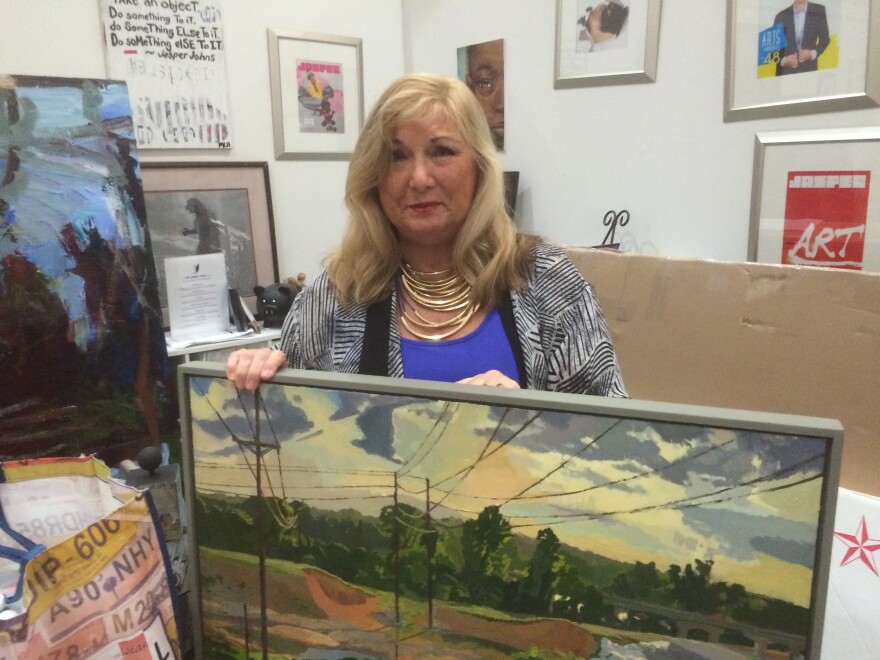When the flood hit South Carolina in October of last year, Cindi Boiter felt helpless to the devastation around her. Talking with her artist friends, she realized they had an itch to respond to the storm somehow. An idea came to her: an art exhibition on the anniversary of the flood. "You can record data, say how much water we had, but there are sensations of experiencing this that there are almost not words for," says Boiter. Cooper McKim reports.

On a tree-lined street in Columbia, there's an expansive white and gray art space that echoes with a single footstep. The room is lined with studios. Cindi Boiter uses one of them as the headquarters for Jasper Magazine, where's she's the founder and editor-in-chief. The five-year old publication provides arts coverage in Columbia. Right now, the studio is covered in artwork lying in wait for the upcoming anniversary event.
"This jumble of things that we see are a small portion of the pieces of visual art," says Boiter. She points to a small metal sculpture that looks like a Greek god keeping a flooding house afloat. There's another painting of dunes and shattered lands intersected with power lines. It's hard to take more than a step.

Boiter wanted to attract artists from all mediums. For "Marked by the Water" she notes there will be dance, film, paintings, sculpture, poetry, and photography - no musicians, she adds with disappointment. Boiter says, "every discipline is going to interpret something... that amalgam and roster of different sensations should help touch someone out there and that's when they actually feel."
Boiter adds the event was funded by the Central Carolina Community Foundation.
Marked by the Water
October 4th arrives. It's been a year since a historic flood plagued the state. It's also the night of "Marked by the Water."

The once deserted arts center now echoes with the din of a crowd. Visitors munch pretzels and hors d'oeuvres as they investigate each newly curated corner of the space. Many whip out smart phones capturing the unique works. One painting is covered in cloth, awaiting the right moment for unveiling.
On the other side of the exhibit are three sheets of sparkling fabric sewn with bridal tulle, ribbon, and thread. On each is a unique poem by a local resident about their flood experience. Susan Lenz is the artist. On one sheet is a poem by Bill Higgins.
Throughout the night, Boiter shuffles around visibly excited with a hint of stress. She says it's things are going well so far, but "the books didn't arrive until 4:20 this afternoon and the event started at six." She had to sign and number the books with a few helpers in less than an hour.
"It's about finding that intrinsic thing that nothing else can convey, other than art."
The next portion of the night is a combination of poetry, film, and dance. Before that began, she reflects on how important art is the conversation of recovery: "It's about finding that intrinsic thing that nothing else can convey, other than art."


